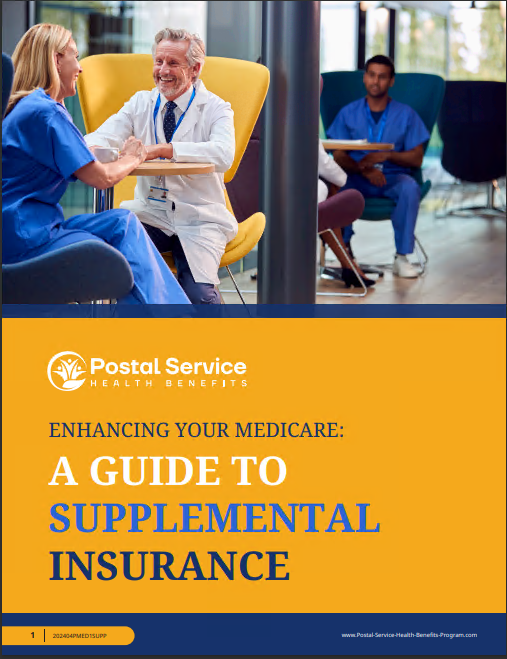Key Takeaways
- 2024 Open Season Deadlines: Open Season for the new Postal Service Health Benefits (PSHB) program runs from November 11 to December 9, 2024, giving all eligible postal workers and retirees a chance to review and select their coverage options for 2025.
- Medicare Enrollment Requirements: If you or a family member are Medicare-eligible, it’s essential to check whether enrolling in Medicare Part B is necessary to keep PSHB coverage in 2025.
Welcoming PSHB: Your New Postal Health Benefits Program
With the 2024 Open Season on the horizon, a significant shift is happening for USPS employees and retirees as we move from the Federal Employees Health Benefits (FEHB) program to the Postal Service Health Benefits (PSHB) program. This change might seem overwhelming at first, but with a little insight, you’ll feel confident about what’s coming and ready to make the best choices for yourself and your family.
Let’s break down everything you need to know about PSHB and the key changes affecting health coverage this Open Season.
Open Season: Your Annual Window for Health Plan Adjustments
If you’re a USPS employee, retiree, or family member, the annual Open Season is your time to review, select, or adjust your health insurance. This year, it runs from November 11 to December 9, 2024. You’ll want to mark your calendar because these dates allow you to ensure your plan for 2025 is in place without gaps or last-minute rushes.
Any changes made during Open Season will take effect on January 1, 2025. Whether it’s a new plan, an adjustment to your current coverage, or even adding family members, this period gives you a fresh start for the year.
Automatic Enrollment: No Need to Stress
Worried about accidentally missing the switch? USPS employees currently enrolled in FEHB will be automatically enrolled in a PSHB plan that corresponds to their current FEHB selection. This seamless transition aims to reduce the hassle. However, don’t assume that the automatic selection will be your best option—reviewing the available plans can help you decide if this default choice meets your needs.
Medicare and PSHB: Important Enrollment Requirements for Retirees
One of the major differences with PSHB involves Medicare Part B. While FEHB allowed some flexibility, PSHB may require certain Medicare-eligible annuitants and family members to enroll in Part B to maintain their coverage. Here’s what you need to know:
- Who Needs Part B? Generally, Medicare-eligible retirees and family members enrolled in PSHB need to have Part B to continue coverage.
- Who’s Exempt? If you retired on or before January 1, 2025, you aren’t required to sign up for Part B to keep PSHB coverage. But if you’re not enrolled in Part B and you retire after this date, joining Part B will likely be mandatory for you.
This Medicare requirement isn’t meant to complicate things—it’s designed to ensure comprehensive medical coverage, combining both Medicare and PSHB benefits to avoid coverage gaps. If you’re Medicare-eligible, make sure to review Part B enrollment options to align with PSHB requirements for seamless benefits.
What’s Different with PSHB? Key Shifts from FEHB
Broader Choice in Health Plans
PSHB aims to offer postal workers more plan choices, tailored specifically for USPS employees and retirees. By transitioning from FEHB to a program designed just for USPS, PSHB is geared toward providing plans that meet the unique health needs of postal workers and their families.
During Open Season, you’ll have access to plan details on the PSHB website, where you can compare options to ensure they fit your specific health needs, family situation, and budget. Taking a closer look at the variety of plans can reveal differences in coverage and out-of-pocket costs that may matter to you.
Enhanced Coordination with Medicare
Another goal of PSHB is to coordinate more closely with Medicare, especially for retirees. This coordination may help lower out-of-pocket costs while extending benefits coverage. Medicare typically covers a large share of medical expenses, with PSHB acting as secondary insurance to fill in any gaps—covering services and costs Medicare doesn’t handle entirely.
For those of us already enrolled in Medicare Parts A and B, this can mean more efficient and predictable healthcare expenses, along with more comprehensive care for doctor visits, hospital stays, and prescriptions.
Open Season Tips: Choosing the Right PSHB Plan for You
1. Assess Your Health Needs and Those of Your Family
Consider the healthcare services you and your family regularly use. Do you have specific prescriptions, specialists, or treatments that matter most? This can help you weigh plan differences and decide which PSHB option best meets those needs.
2. Review Out-of-Pocket Costs
When choosing a new plan, think about deductibles, copays, and coinsurance. A plan with a lower premium may come with higher out-of-pocket costs, while a higher-premium plan may reduce costs for frequent doctor visits, treatments, or medications. Each plan will detail these costs, so make sure to read them closely.
3. Consider Future Healthcare Needs
Healthcare needs can change over time, and choosing a plan that’s adaptable is crucial. If you expect more healthcare needs in the coming year (say, due to an anticipated surgery or ongoing treatment), a plan with broader coverage and lower out-of-pocket maximums might make sense.
4. Check for Provider Networks
If you already have preferred doctors or specialists, make sure they’re included in the plan’s network. Staying within the network can save you money, while out-of-network services may lead to unexpected charges. Many plans offer network directories, so take a look to see if your current providers are covered.
Steps to Take After Selecting Your Plan
Once you’ve chosen a PSHB plan, you’ll want to stay organized to make the most of your benefits:
- Review Your Coverage Details: After your new PSHB plan kicks in, take a little time to review the coverage specifics. It helps to know what’s included and any potential exclusions.
- Set Up Your Medicare Part B (If Applicable): For those needing Medicare Part B to keep PSHB coverage, make sure your enrollment aligns with your PSHB start date. The sooner you complete this step, the smoother your coverage experience will be.
- Stay Updated with Benefit Changes: Throughout the year, keep an eye on any updates from PSHB regarding your benefits. These might include changes in network providers or adjustments in copays or deductibles.
Postal Retirees: How PSHB Supports Your Retirement
As a retiree, your healthcare needs may evolve, and PSHB has been designed to coordinate closely with Medicare, making it easier to manage healthcare expenses. With Medicare Parts A and B covering a large portion of your medical needs, PSHB can step in as secondary insurance to reduce out-of-pocket expenses.
For retirees who might need extra support, PSHB’s structure is intended to work hand-in-hand with Medicare to cover the healthcare gaps that can arise in retirement. This coordination aims to protect your savings while offering reliable coverage, whether it’s for routine care or unexpected medical needs.
What Happens If You Miss Open Season?
Missing Open Season doesn’t mean you’re out of options, but it does limit your ability to make changes until the next enrollment period unless you qualify for a Special Enrollment Period (SEP). SEPs are triggered by specific life events, like marriage, divorce, moving, or losing other health coverage.
Without an SEP, your next opportunity to adjust your PSHB coverage will come during the following Open Season, typically held in the fall each year. To avoid waiting, it’s best to make your changes now if you anticipate any upcoming healthcare needs.
Making the Most of Your New Postal Benefits
The transition from FEHB to PSHB marks a unique shift in healthcare coverage for postal workers and retirees. While it may feel different, PSHB is designed with USPS employees in mind, offering choices and coverage tailored to your healthcare needs. By actively participating in Open Season, you’re setting yourself up for a smooth 2025 with a plan that works best for you.
If you’re already on Medicare, understanding how PSHB fits with your existing benefits can help you maximize coverage and minimize costs. And by staying on top of enrollment dates and requirements, especially with the new Part B coordination, you’re positioning yourself for more effective healthcare coverage throughout the year.







